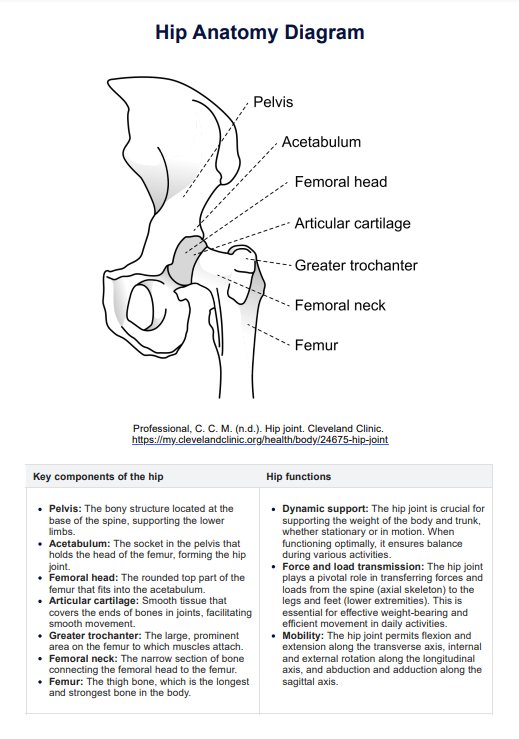Arthritis, which causes the deterioration of hip tissues, is the most common hip problem.

Hip Anatomy Diagram
Use our Hip Anatomy Diagram to understand the build and function of the hip better for educational and clinical purposes.
Use Template
Hip Anatomy Diagram Template
Commonly asked questions
Hip joint problems usually cause pain mostly in the groin or inside of the hip.
If the pain is located in the groin or inner hip, the cause is most likely a problem in the hip joint. Meanwhile, pain in another location, like the upper thigh or outer hip, signifies problems with the muscle.
EHR and practice management software
Get started for free
*No credit card required
Free
$0/usd
Unlimited clients
Telehealth
1GB of storage
Client portal text
Automated billing and online payments











